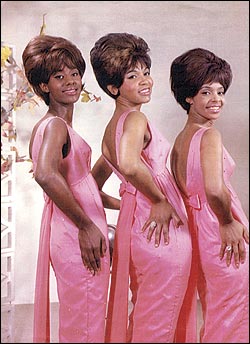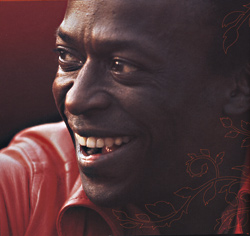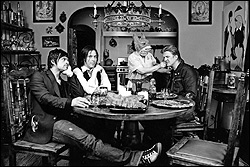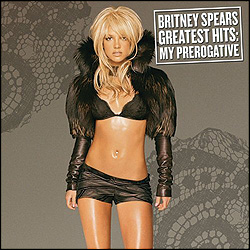Are there 120 ace girl-group tracks that a knowledgeable (not obsessive) music fan has yet to hear? One Kiss Can Lead to Another: Girl Group Sounds—Lost & Found, Rhino’s new four-disc miscellany of less-than- obvious but more-than-obscure recordings from the ’60s, raises that utilitarian question immediately, and answers it after a single listen: almost. I’d say closer to a hundred, including several later re-created (“Go Now”) or ruined (“I’m Into Something Good”) by British Invaders, some featuring choice before-they-were-famous moments from Dolly Parton (“Don’t Drop Out”) and Jimmy Page (oh, he’s all over the place), and others revealing more variants of the Cookies (aka the Cinderellas, aka the Honey Bees, aka the Palisades) than a reasonable person would have had cause to suspect.
This collection is consistent enough, then, to elicit adoration from anyone susceptible to the girl-group sensibility—whatever that is. You’ll find no definition in the defensive companion essay from Gene Scullati, which shadowboxes with the received wisdom of Rolling Stone as though anyone tin eared enough to still dismiss the fecund early ’60s is worth the effort. Gerri Hirshey, who contributes a more substantial bit of social history to the package, likewise shies away from categorizing the disparate elements of what she calls “the ultimate variety pack.” If one factor defined this working-class, urban alternative to “babies, factories, or day work” (as Mary Wells summarizes her nonshowbiz options at the time), Hirshey implies, it was the obvious one: There were lots of women singers hitting the charts.
Hirshey is quick to add that no “nascent feminism” buoyed this phenomenon. Men still pulled the financial and aesthetic strings, and through these relentless male-directed compositions, women sought “endless ways to conjugate that troublesome verb ‘to love.'” As usual in gender matters, however, the reality is far messier, more frustrating, and more fascinating. Of course, no coherent ideology can be confidently labeled “the girl-group sensibility”—this music’s charm derives from how these songs’ varied perspectives complement, conflict with, or remain oblivious to one another. The minor hits and near misses on One Kiss Leads to Another might seem a less reliable cultural barometer than “Be My Baby” or “Where Did Our Love Go?” Instead, they refract and intensify and distort sounds and ideas that those familiar touchstones blend too perfectly for us to hear.
The opening cuts on the first disc of One Kiss Can Lead to Another begin to suggest the range covered here. The Velvelettes’ “Needle in a Haystack” is desperate for love, while “He’s Got the Power” by the Exciters is reluctantly submissive. The burst of autonomy in the Chiffons’ proto-psych “Nobody Knows What’s Goin’ On (In My Mind but Me)” blossoms into Donna Lynn’s gender-flipped Jagger-Richards kiss-off, “I’d Much Rather Be With the Girls.” And then along comes Little Eva’s “Keep Your Hands Off My Baby,” a stone classic of male objectification—you can borrow all her other fashion accessories, but her man is off limits. It’s not the last time in which that subspecies of proto-feminism known as spunk leads to catfighting, just as Maxine Brown’s “Oh No Not My Baby,” in which her boy’s marriage proposal excuses his “last minute fling,” isn’t the last time that a girl will assert her independence from family and friends by making a stupid decision.
But it’s her decision. In many ways, these songs anticipate the questions that third- and fourth-wave feminism would raise about whether self-assertive women could choose traditional roles that might have been decried a generation earlier. And though the voices here are as disparate as the emotions expressed, these singers do share a common spirit: At their most girlish and self-abnegating, these are the sounds of individuality being asserted. Sometimes mildly, sometimes tentatively, and sometimes foolishly, but always there’s that strain against others’ expectations. In contrast, the bad boys the singers worship, like the pussy-whipped beau the Shangri-Las need to set free on “Out in the Streets,” appear starkly unworthy of the emotion invested in them. Which may be why, from Shirelles’ fan John Lennon to Crystals’ fan Bruce Springsteen, rock’s great romantics emulated the women as much as they lusted after them. There’s a particular intensity of need and desire here that boy-rock commonly lacks.
But for all this talk about love, the real prize on One Kiss Can Lead to Another is “Egyptian Shumba,” a goofball dance track about boogying along the Nile constructed by falsetto weirdo Lou Christie around a set of voices even squeakier than his own. They belonged to a group called the Tammys, and their squiggly harmonies and delirious yelps seem to point toward Rough Trade punks like Liliput and the Raincoats, and even more directly toward the B-52s’ Kate Pierson and Cindy Wilson. As it turns out, what unites the music on One Kiss Can Lead to Another is nothing as mundane as the quest for the perfect boy. It’s the desire to create a space where the broadest range of feminine experience could thrive—even if the brash slaves to love harmonizing here had just begun to imagine how broad a range that could someday be.








